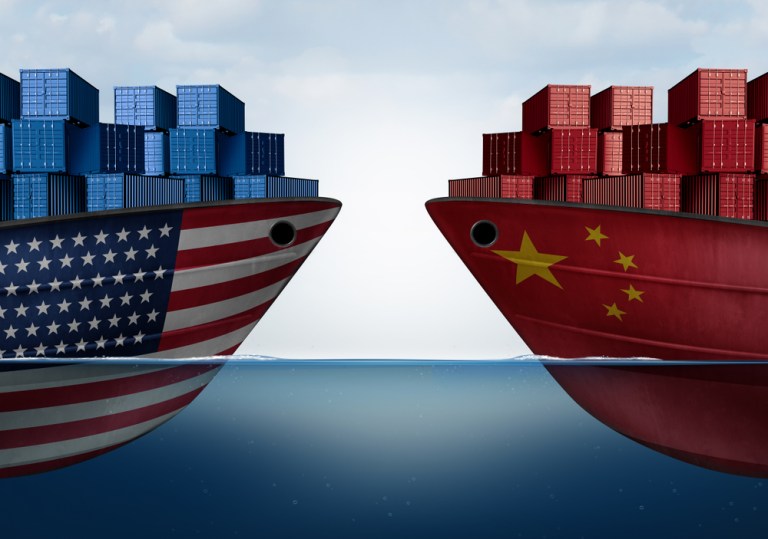
Amid the swirl of headlines that focus on the back and forth between China and the United States, and the continuing escalation of tariffs, the ripple effects and casualties will be far-reaching. As with so much else in life, there will be winners and losers, but maybe not among the usual suspects.
Purchasing power, at least for consumers in some important markets, may be one of the first casualties. Where purchasing power declines, so too does excitement over spending. Might the heretofore opened spigots of cross-border commerce tighten?
First, a bit about mechanics. Bloomberg reports that currency fluctuations are likely, as the U.S. has just imposed a new round of tariffs on China, and reciprocation looms on the horizon. Devaluation means assets lose value. In relatively developed markets where individuals (and, yes, companies too) hold assets that are generally relied upon for income or safety in an economic pinch, the wealth effect dwindles. So, too, does consumer sentiment.
If the goal — at least from the Trump administration’s point of view — is to boost exports and reduce imports, the attendant wild card is foreign exchange rates. The dollar remains strong.
The currency seesaw
Other currencies, by weakening, can improve their home countries’ competitive positioning on the global stage. Take India, for example, where the rupee is at or near recorded lows, which makes the country a beneficiary of increased clamor for its exports.
All of this may augur well for economies that are not the United States — at least when it comes to finding final markets for finished goods.
Central banks are likely to reexamine monetary policy, which, in the age of low interest rates, means mulling whether to boost them. This had been somewhat of a foregone conclusion before the trade war started to bloom. So, with currencies from other nations weakening, exports from those areas will rise, widening U.S. trade deficits with those nations.
The U.S. must tread carefully as well, as increasing interest rates domestically will mean the dollar will become relatively attractive as a currency, draw investor interest, appreciate and drag on exports. It’s a tough balancing act.
Among the winners…
We mentioned above that there will be winners. Step aside from the traditional debate about steelmakers and farmers and verticals where the tariffs have been levied (10 percent here, 25 percent there and pretty soon it all begins to add up), if only for a moment.
Tariffs on soybeans? India boosts its exports? Believe it or not, there is a ripple effect that goes beyond pricing of the commodities — in the case of the former or the general trade deficit between two nations in the case of the latter. The impacts come to the payments ecosystem on a larger scale, eventually, and can change how we pay and where.
Here’s an example: It’s been well-documented that India has been embracing digital payments. Though the goal in the past has been stated as one that helps cut down on black market activity and helps the government collect more in the way of tax revenues, the shift also has the benefit of bringing both large and small firms onto the world trade stage and can benefit players that offer ways to do this (such as Paytm, which is already logging transactions and users in the billions).
Cross-border payments are indeed heating up, and technology will, of course, continue to move forward. The shift toward bits and bytes ensures that geographically far-flung businesses up and down supply chains are speaking a common language. The firms themselves plant flags in these locales. Consider Airwallex, which, just days ago, said it had raised $80 million to boost its international presence in corridors as diverse (and linked) as Asia, Europe and, of course, the U.S.
Other marquee names may get a boost from the trade war, again, in ways that seem a little less readily apparent — at least initially, if the consumer becomes cautious. Earlier this week, stock market enthusiast, TV show host and investor Jim Cramer said that Mastercard and Visa remain “unbeatable” hedges against the trade war. The thinking is that they do not remain exposed to China — but they want to get there. If the Chinese government sits down with those companies and offers some level of entry into the country, Cramer noted, the trade war could be shut down (at least from Trump’s side). That’s a bit of a sweeping statement, but it does speak to an overall tenet of a trade war: to level playing fields.
Economists may argue that tariffs are clumsy tools to use in such efforts. But writ on a larger scale, such movement as Cramer seems to advocate would open up new markets for the card giants, bringing new ways to pay to the Chinese. Offering new ways to pay for hundreds of millions of consumers would have a positive spillover effect on global commerce. Thus, eventually, a retailer in the Heartland of the U.S., perhaps in the not-too-distant future, could sell to a Chinese consumer using a Visa credit card, all by dint of a trade war.
A butterfly flaps its wings, and somewhere down the line blows a hurricane, to paraphrase the old adage. In other words, watch for the ripple effects of this trade battle, beyond today’s horizon.